War of 1812
What Happened During the War of 1812?
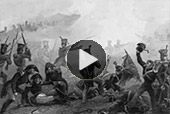 The War of 1812 came on the heels of the American Revolution, which may be why so few Americans know much about it, aside from the fact that it was during the war that our national anthem, The Star Spangled Banner, was written. Read more
The War of 1812 came on the heels of the American Revolution, which may be why so few Americans know much about it, aside from the fact that it was during the war that our national anthem, The Star Spangled Banner, was written. Read more
Sackets Harbor Minute
The site, with its expansive landscape, sweeping views of the lake, and historic features, encompasses one-third of the village and is significant for its critical role during the War of 1812 and subsequent use as a United States naval station. Read more
The Capture of Fort Niagara
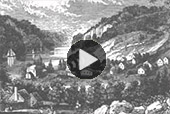 Major George Armistead’s name is indelibly linked with America’s most famous flag; the Star Spangled Banner. What is more obscure is his connection with another preserved flag from the War of 1812 that currently hangs at Old Fort Niagara. Read more
Major George Armistead’s name is indelibly linked with America’s most famous flag; the Star Spangled Banner. What is more obscure is his connection with another preserved flag from the War of 1812 that currently hangs at Old Fort Niagara. Read more
The Battle of Ogdensburg
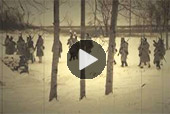 Both British and American high commands saw important strategic value in the river at Ogdensburg. A properly conducted campaign there with gunboats attacking British supply lines could isolate the great lakes and set the stage for an American invasion, or at least a foothold on the Canadian side. Read more
Both British and American high commands saw important strategic value in the river at Ogdensburg. A properly conducted campaign there with gunboats attacking British supply lines could isolate the great lakes and set the stage for an American invasion, or at least a foothold on the Canadian side. Read more
The Fortification of New York Harbor
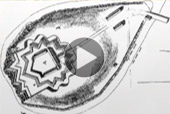 The year was 1812, just 29 years since the Treaty of Paris recognized the independence of the United States achieved through the American Revolution. But in 1812 this independence was being threatened by the very country that signed the treaty, Great Britain. Read more
The year was 1812, just 29 years since the Treaty of Paris recognized the independence of the United States achieved through the American Revolution. But in 1812 this independence was being threatened by the very country that signed the treaty, Great Britain. Read more
The Battle of Oswego
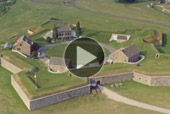 During the War of 1812 Oswego, New York was an important forwarding point on the supply route to American military operations on Lake Ontario. Fort Ontario, which guarded Oswego, turned away one attack in 1813 but fell to a powerful British fleet with 1,000 troops on May 6, 1814. Read more
During the War of 1812 Oswego, New York was an important forwarding point on the supply route to American military operations on Lake Ontario. Fort Ontario, which guarded Oswego, turned away one attack in 1813 but fell to a powerful British fleet with 1,000 troops on May 6, 1814. Read more
The Battle of Big Sandy Creek
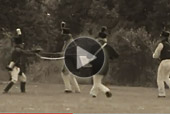 The following account was found in an old file of the Sandy Creek News for May 7, 1896. It’s an interesting description of the War of 1812 and of life during the 18th century. Mrs. Emily Otis Gill who wrote it was born in Ellisburg April 3, 1814. Read more
The following account was found in an old file of the Sandy Creek News for May 7, 1896. It’s an interesting description of the War of 1812 and of life during the 18th century. Mrs. Emily Otis Gill who wrote it was born in Ellisburg April 3, 1814. Read more
The Burning of Washington
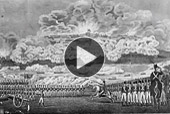 A British Account of the Burning of Washington. George Robert Gleig was a British soldier who witnessed the burning of Washington by the British on August 23, 1814. Read more
A British Account of the Burning of Washington. George Robert Gleig was a British soldier who witnessed the burning of Washington by the British on August 23, 1814. Read more
The Battle of Plattsburgh
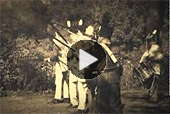 While individual battles and skirmishes were dramatically covered in the recent videos, the British plan of diverting American attention away from the Lake Champlain region to attack Plattsburgh, the single most strategically-crafted event of the British War plan was not addressed. Read more
While individual battles and skirmishes were dramatically covered in the recent videos, the British plan of diverting American attention away from the Lake Champlain region to attack Plattsburgh, the single most strategically-crafted event of the British War plan was not addressed. Read more
The Battle of Baltimore
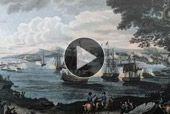 It was early September in 1814 and Baltimore had about as much difficulty as it could handle. Just two weeks before, Washington, D.C. was burned by the British and the U.S. President was fleeing for his life. Read more
It was early September in 1814 and Baltimore had about as much difficulty as it could handle. Just two weeks before, Washington, D.C. was burned by the British and the U.S. President was fleeing for his life. Read more
Famous Faces and Phrases
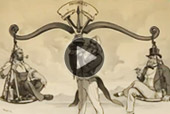 Captain James Lawrence fell, mortally wounded, on the deck of the frigate Chesapeake, in an engagement with the British ship, Shannon. As he was being carried below, he utters the memorable words, “Don’t give up the Ship!” Five days later he died on board the Chesapeake, having lost the battle and the ship. Read more
Captain James Lawrence fell, mortally wounded, on the deck of the frigate Chesapeake, in an engagement with the British ship, Shannon. As he was being carried below, he utters the memorable words, “Don’t give up the Ship!” Five days later he died on board the Chesapeake, having lost the battle and the ship. Read more
The War of 1812 came on the heels of the American Revolution, which may be why so few Americans know much about it, aside from the fact that it was during the war that our national anthem, The Star Spangled Banner, was written. June 18, 2012 kicks off the bicentennial of “The Second American Revolution” and a number of communities in New York State, especially those in northern and western New York where many of the land and sea battles of the war occurred, are staging special commemorative events to mark the nearly three year war.
On this page you’ll find a series of War of 1812 Minutes produced by WCNY, with the majority of them highlighting the important role the Empire State played in this military conflict. You’ll also find additional information, provided by historians and organizations, which expand the minutes’ messages and also offer suggestions on places you can visit and resources you can use to find out more about what some call “The Forgotten War.” Since the war was fought between 1812 and 1815, well before the advent of photography, most of the images, including those utilized on this page and in the video Minutes, are paintings and drawings, some with amazing, photographic-like detail. One of the most famous images from the War of 1812 is that of Uncle Sam, whose origins can be traced to this war and the activities of a meatpacker in Troy, New York.
This web page also contains links to resources, which will be added to during the course of the Bicentennial. Anyone wishing to have links to their resources should contact education@wcny.org
Why the War of 1812?
Even though the 13 American colonies won the American Revolution, Great Britain had never entirely left North America. The British still could be found on land along the Great Lakes, continued to give support to Native American tribes fighting against the expansion of the western frontier by white settlers, and interfered with American shipping and trade. Britain was at war with France and both European super-powers would seize cargo from American ships to help with their war efforts. Perhaps worse yet, the British, in particular, would board American ships and impress the sailors, forcing them into service on British naval vessels.
Some Americans felt that these actions threatened America’s sovereignty and honor, while others thought another war with Great Britain would provide an opportunity to capture the lands of British Canada. On June 18, 1812 President James Madison signed the official declaration of war on Britain. Congress approved it by the closest war vote in American history. For the first time, the young United States had declared war on another nation. The “Second War of Independence” had begun.
The war was fought from June, 1812 until February, 1815, when the U.S. Senate ratified the Treaty of Ghent officially ending the war. Some say no one really won the war, that the Treaty essentially returned relationships to the pre-war status quo. Others believe the Americans were the victors while the opposite opinion – that the British Canadians triumphed – is also popular. A number of historians make the point that the Native Americans in the affected parts of the country suffered the greatest loss. What is clear is that the relationship between Great Britain and America gradually changed but the boundary lines between the United States and Canada remained intact…and since the War of 1812, peaceful.
The New York State Museum has put together a list of some links to War of 1812 resources they have available. They include:
- The State Library’s online catalog – (suggest searching on the phrase War of 1812); call 518-474-5355 for more information.
- NYS Library Maps
- Recently received information (British military and naval records) from our State Librarian; Library and Archives Canada, Ottawa has digitized microfilm related to the War of 1812
St. Lawrence 1812 Bicentennial Alliance: General historical information but focus is on the Bicentennial events in the Canadian and American communities along Eastern Lake Ontario and the St. Lawrence River:
www.celebrate1812.com
War of 1812 website featuring articles and resources from the Canadian perspective:
http://www.warof1812.ca/
Overview of the War of 1812 with illustrated timeline and resources from Historica Dominion Institute, The Royal Canadian Geographical Society, and Parks Canada:
http://www.eighteentwelve.ca/
The Canadian Government’s War of 1812 Bicentennial website:
http://1812.gc.ca/eng/1305654894724/1305655293741
An online exhibit about the War of 1812 with materials from the Archives of Ontario:
http://www.archives.gov.on.ca/english/educational-resources/pdf/war-of-1812.pdf
This website provides an overview of the War of 1812 and many links to additional resources, primarily Canadian:
http://www.thecanadianencyclopedia.com/articles/war-of-1812
Benson Lossing’s 1869 Pictorial Field-Book of the War of 1812:
http://freepages.history.rootsweb.ancestry.com/~wcarr1/Lossing2/Contents.html
Library of Congress War of 1812 images:
http://www.loc.gov/pictures/search/?q=War%20of%201812%20
WNED-Buffalo’s War of 1812 documentary and supporting materials, including a War of 1812 Educator’s Guide:
http://www.pbs.org/wned/war-of-1812/
Correspondence and documents regarding the defense and burning of Washington at the Navy Department Library, Naval Documents of the War of 1812:
http://www.history.navy.mil/library/online/burning_washington.htm
Battle of Plattsburgh Association (and Museum):
www.battleofplattsburgh.org
Battle of Plattsburgh Historic Trail site oriented to Boy Scouts:
http://www.warof1812trail.com/
Credits: WCNY appreciates the contributions of the historians and writers found on this War of 1812 web page.
A Message from New York State Historian, Robert Weible
New York State’s history is in many ways American history. This is certainly true of the War of 1812. Between June 18, 1812 and February 18, 1815, the United States engaged in a military conflict against the British Empire in the New World. The New York-Canadian border was the central front of that war, and several of the nation’s most prominent military figures of the early 19th Century made their names along New York State’s northern frontier. Several pivotal battles also took place in New York State or were launched from here, including the Battle of Plattsburgh in September 1814. The country’s longest serving arsenal was established at Watervliet in 1813 near the confluence of the Hudson and Mohawk Rivers in order to supply American troops defending the northern border. Uncle Sam, the enduring symbol known to all of us was inspired by Samuel Wilson, a meat packer in Troy, New York, who’s “U.S.” stamped barrels were said to be a gift from Uncle Sam.
Just as the War of 1812 truly is a “New York Story,” so too must the effort to commemorate the Bicentennial of the War of 1812 be a statewide effort. In an era of difficult economics and dwindling resources, the idea that this project can be accomplished by any single entity is unrealistic. As part of this Bicentennial effort, the New York State Museum is launching a commemorative website and web-based exhibition in June 2012. The concept of a web-based exhibition is not a new one, not even within the New York State Museum itself. Unlike previous efforts at web exhibits, however, this project will not simply be an electronic version of an existing exhibit. Rather, the War of 1812 Bicentennial web exhibit will exist entirely in a virtual space.
Interested historians – from academics to genealogists – will have an opportunity to submit 1812-related stories – whether they are biographies of local soldiers or citizens, or essays on New York-related events – by following a standardized format. We will also give historical societies and museums across the state a platform with which to highlight their 1812 collections in a virtual artifact gallery.
In cooperation with our sister agencies within the New York State Office of Cultural Education – the New York State Archives, Library, and Office of Educational Television and Public Broadcasting – the New York State Museum hopes that this “space” will be a site for conversation and coordination amongst all those interested in commemorating the memory of the War of 1812. The goal is not to dictate the history of the conflict across the state, but rather to work with and through our various collaborators and partners in order to really and truly tell the New York story throughout the bicentennial years. The website is envisioned as a clearinghouse for information about New York’s role during the War of 1812 and a site where visitors can stay informed of 1812-related events occurring across the state and at partner sites across the border.
 July 30 at 7 p.m.
July 30 at 7 p.m.
Plattsburgh’s War of 1812 Museum
31 Washington Rd.
Plattsburgh, N.Y. 12903
Glenn F. Williams, a senior historian at the Army Commemorative Office of the U.S. Army Center of Military History at Fort McNair in Washington, D.C., speaks about the naval significance in the Battle of Plattsburgh and the importance of battlefield preservation. Williams is also an award-winning author, served as historian for the American Battlefield Protection Program of the National Park Service and curator/ historian of the U.S.S. Constellation Museum.
 Aug. 3 at 6 p.m.
Aug. 3 at 6 p.m.
Sackets Harbor Battlefield
The battlefield site can be accessed from West Washington Street in Sackets Harbor.
Professor, author and historian Donald Hickey, of Wayne State College, presents “What We Know That Ain’t So: Myths of the War of 1812”, which explores the war through facts and folklore. The event is funded in part by the Sackets Harbor Battlefield Alliance.

